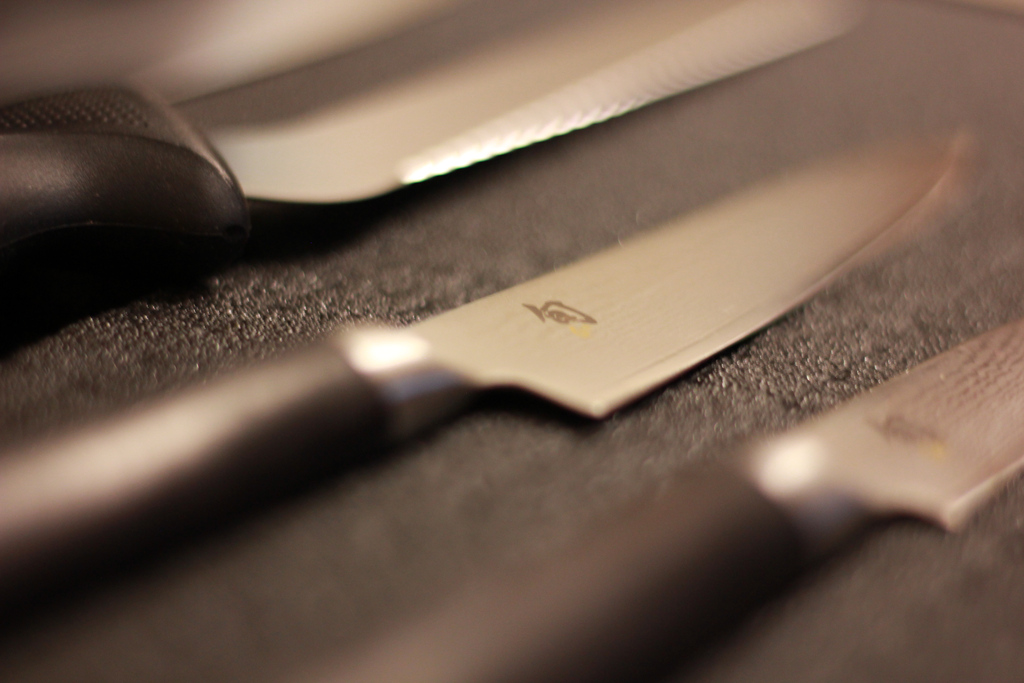It may seem like all knifes pretty much look the same but there can be a significant difference between the steel that each knife has. Softer steels can actually have a tougher edge and are less likely to chip, but they will not be able to hold a razor sharp edge. The harder the steel the better it will hold an edge, but the more likely you will get chips in the blade, but also able to hold more of an acute angle (8-16 Degrees per side). Harder steel is also harder to sharpen or re sharpen. The softer the steel (to a point) the better it will be at heavy chopping tasks, such as cutting bones, but it will hold a razor edge for less time. Generally sharpening to more of an obtuse angle (18-30 Degrees per side). Softer steel is also easier to sharpen or re sharpen.
An example of some brands, their recommended angles, the steel type they use and the hardness they are tempered (heat treated) to
| Brand | HRC | Steel | Recommended angle in degrees on each side |
|---|---|---|---|
| Global | 56-58 | Cromova 18 | 15 |
| Wusthof | 56 | X50CrMoV15 | 14 |
| Shun | 61 | VG10 | 16 |
| Tojiro | 60 | VG10 | 16 |
| Coles | 45-51 | X30Cr13 | No less than 20 |
| Mundial | 57 | x45crmo14 | 20 |
| Hatsukokoro | 63 | SG2 | 10-15 |
| Sentan | 67 | HAP40 | 10-15 |
To make a good steel is a balance of adding components to improve hardness toughness, durability and overall stain resistance (will it rust?). As you improve on aspect of the steel, the other aspects will normally change, so making sure you have the right knife for the type of cutting you do is an important step.
Some high carbon steel knives (read not stainless) can have HRC values in the range of 60-68, holding an incredible edge but requiring care to avoid chipping and additional maintenance, such as oiling to prevent rust at the end of use. A sushi chefs yanagiba knife is a good example of this, ultra hard, ultra sharp, single bevel and used for delectate single stroke slicing.
